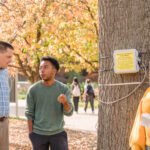
On a sunny fall day in October, a handful of student and faculty researchers are scuttling around outside the Albin O. Kuhn Library and Gallery. High-tech instruments sprawl across folding tables, alongside lower-tech equipment like a hole-punch, glass jars, clippers, and Ziploc bags. A drone about the size of a couch cushion sits on the grass nearby, awaiting instructions.
A student returns from a tree a couple of hundred yards away with a small clipping in a vase-like jar, and the work begins. Different team members examine leaves using the full range of equipment on the tables, collecting different information with each instrument.
Each month from May to October, the researchers complete this process 60 times over two days, collecting data from 60 different trees on UMBC’s main campus representing nine common species of urban trees. Plus, once an hour, the drone flies a pre-programmed route above campus, collecting additional information. Passing UMBC students occasionally stop to ask questions, and the team is happy to share their work.
Michael Alonzo, an assistant professor at American University, leads the project, and Matthew Baker, professor of geography and environmental systems at UMBC, is co-lead. Their students help out on the data collection days. The work also includes faculty and students from Temple University. The goal is to understand how the trees are responding to heat and moisture stress. By looking at trees from different species and in different locations, the research team can learn which trees might be most resilient in a warming world.
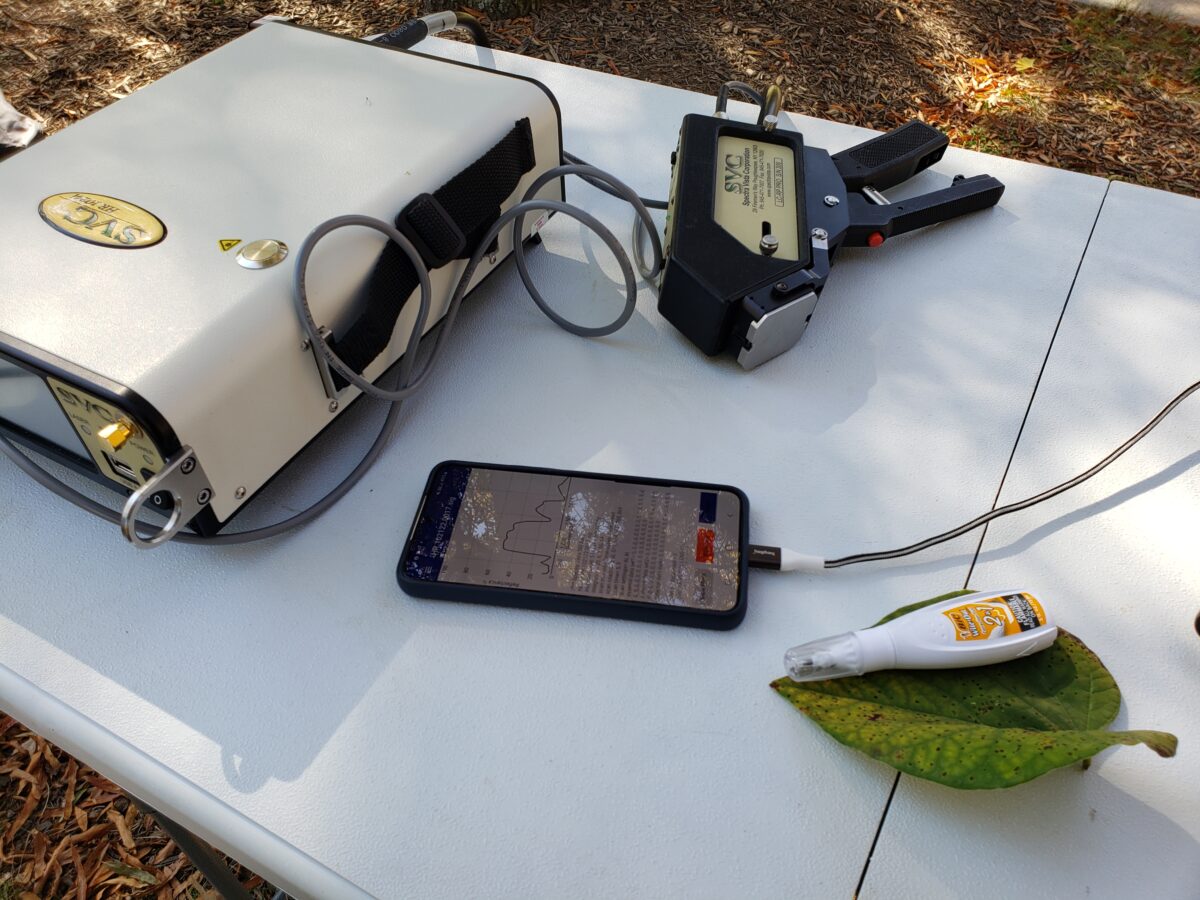 Data collection equipment is ready to go on a folding table outside the library. (Sarah Hansen, M.S. ’15/UMBC)
Data collection equipment is ready to go on a folding table outside the library. (Sarah Hansen, M.S. ’15/UMBC)
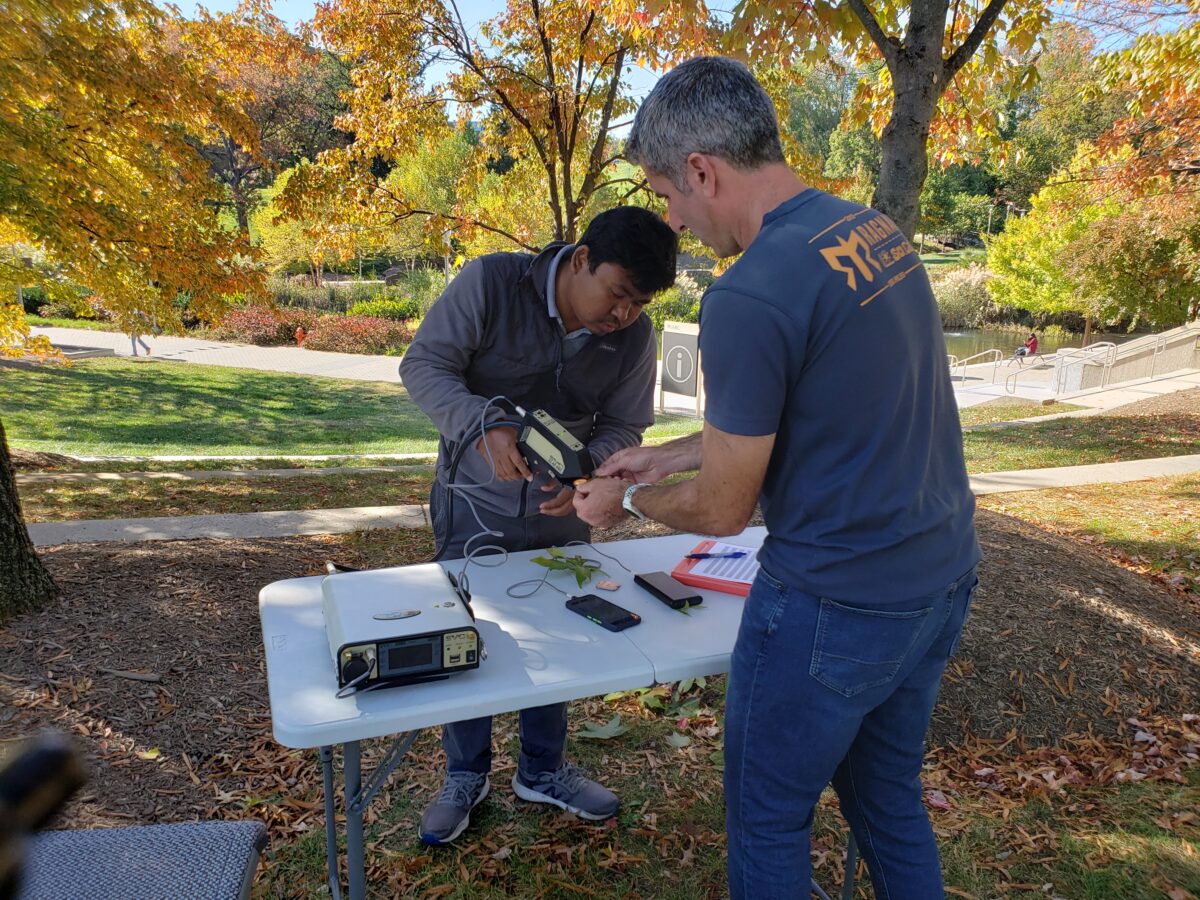 Michael Alonzo and Thu Ya Kyaw, a postdoc at American University, collect data. (Sarah Hansen, M.S. ’15/UMBC)
Michael Alonzo and Thu Ya Kyaw, a postdoc at American University, collect data. (Sarah Hansen, M.S. ’15/UMBC)
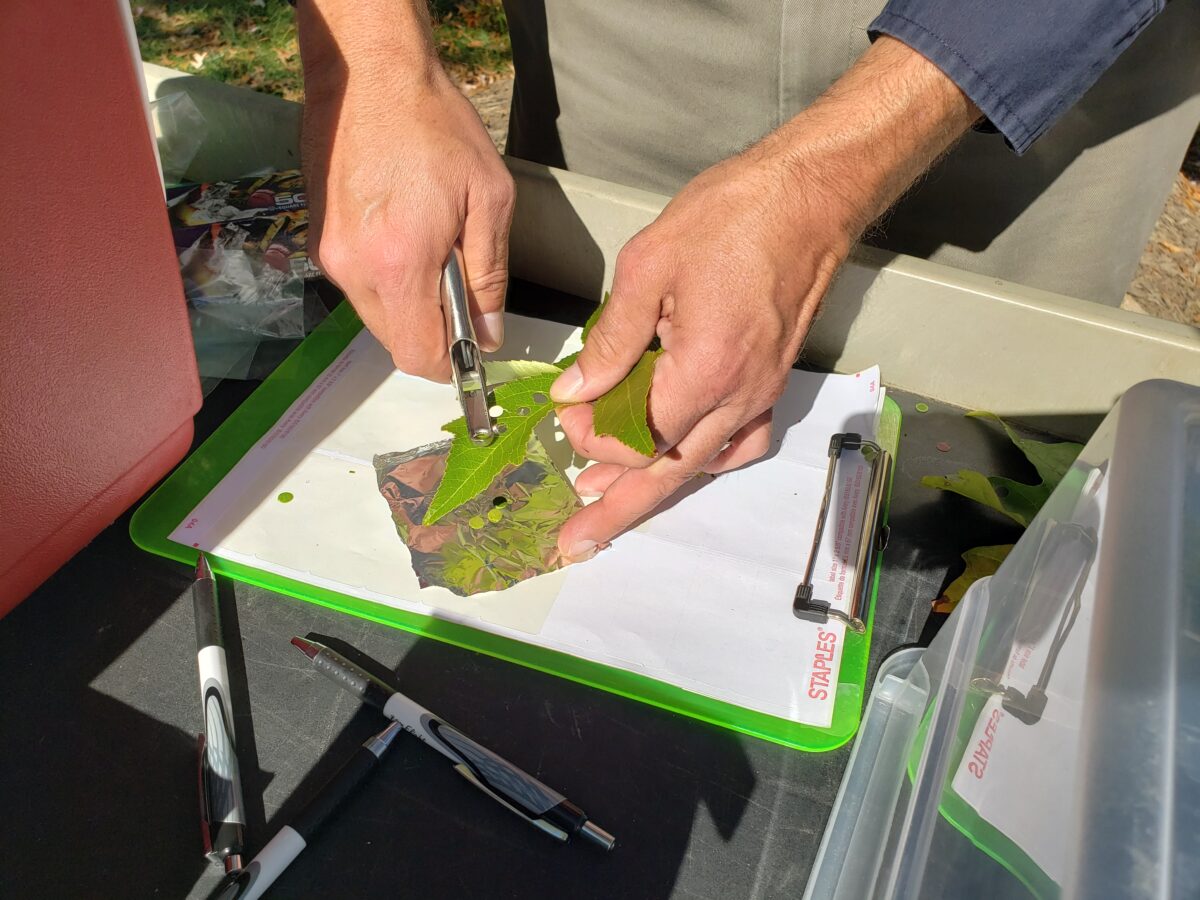 Matthew Baker takes samples from a leaf. (Sarah Hansen, M.S. ’15/UMBC)
Matthew Baker takes samples from a leaf. (Sarah Hansen, M.S. ’15/UMBC)
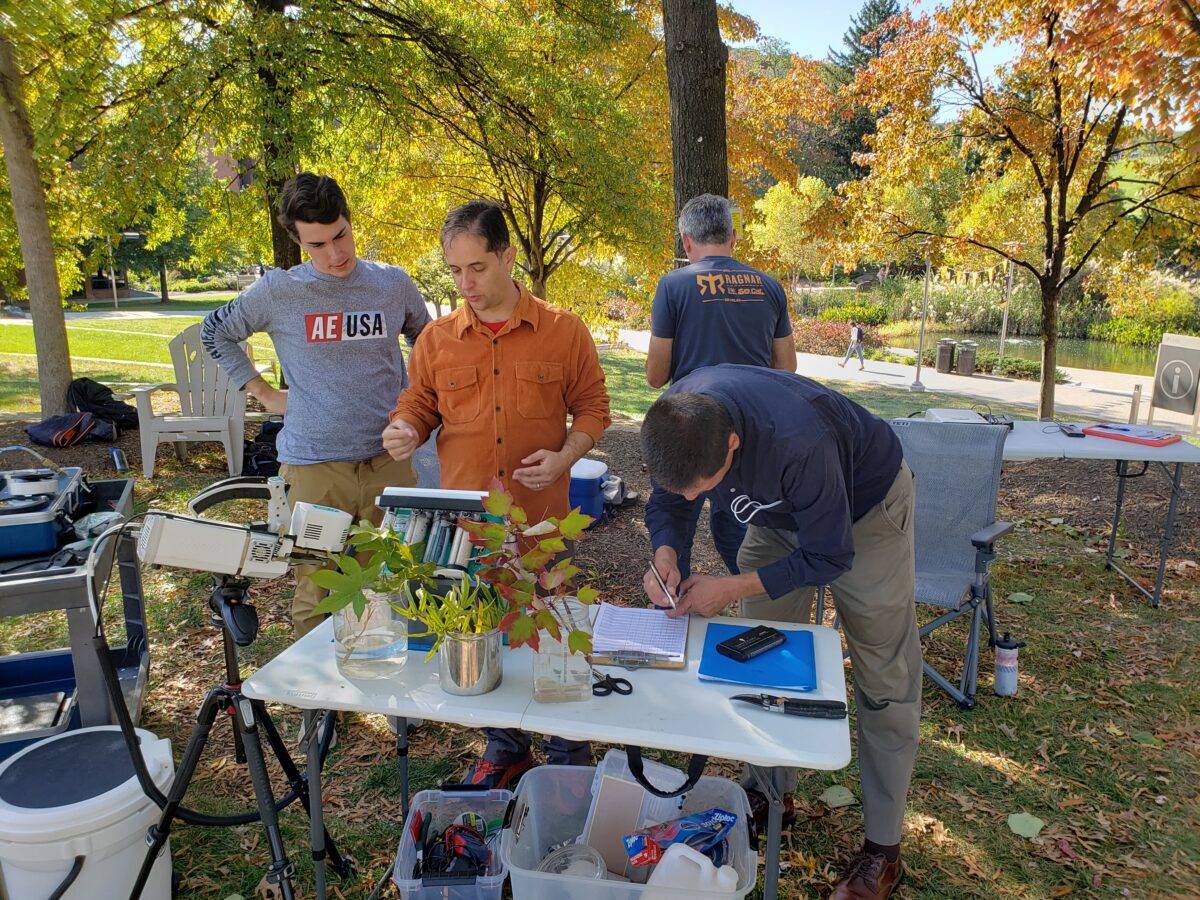 Lucas Martinez (left), a student at American University; Josh Caplan (second from left), a professor at Temple University; Matthew Baker (right) and Michael Alonzo (background, facing away) all work on data collection. (Sarah Hansen, M.S. ’15/UMBC)
Lucas Martinez (left), a student at American University; Josh Caplan (second from left), a professor at Temple University; Matthew Baker (right) and Michael Alonzo (background, facing away) all work on data collection. (Sarah Hansen, M.S. ’15/UMBC)
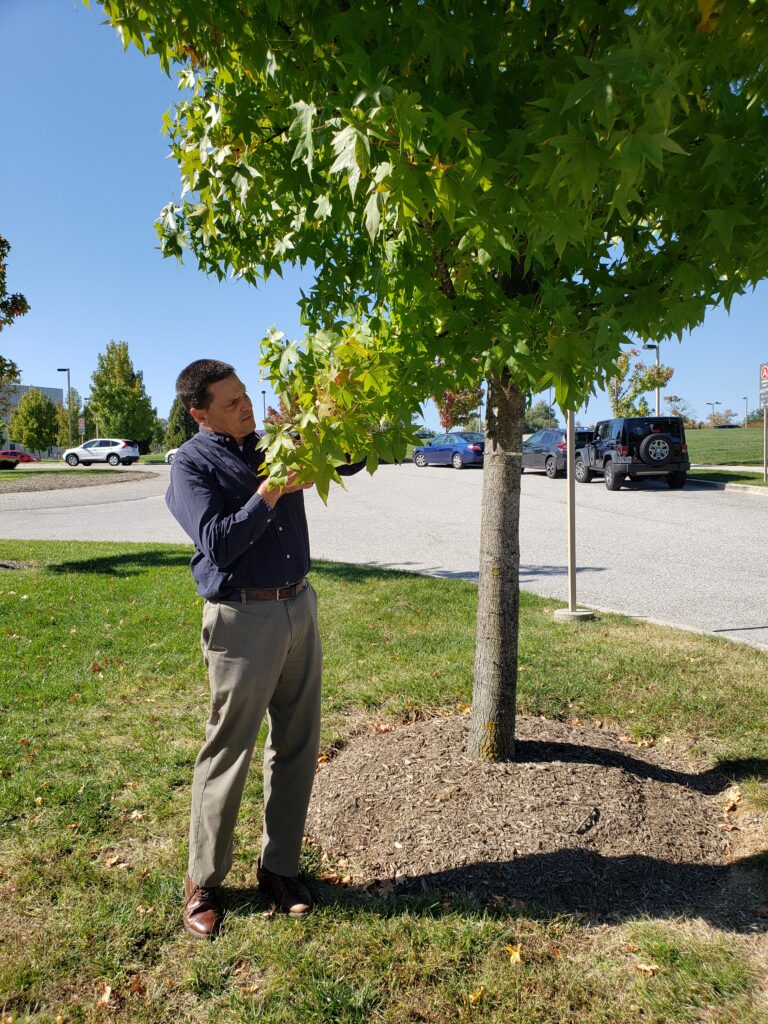 Matthew Baker takes a small clipping from a tree in the study. (Sarah Hansen, M.S. ’15/UMBC)
Matthew Baker takes a small clipping from a tree in the study. (Sarah Hansen, M.S. ’15/UMBC)
Innovation and transpiration
The UMBC campus, with its variety of tree habitats—like parking lots, grass fields, and natural areas—provides an excellent site to conduct the study. And because urban areas, which tend to include more pavement, are already experiencing higher temperatures on average than less developed areas, “Trees in these heat islands may provide a glimpse into the future about how they’ll respond elsewhere,” Baker says.
The instruments on the tables can measure things like how much and which wavelengths of light individual leaves are absorbing and their rate of photosynthesis. There are also sensors placed directly on the trees, which collect data in real time. A sensor in a metal box on each tree measures the rate at which water is flowing from its roots to its leaves, a process known as transpiration that is central to the water cycle. An instrument called a Scholander pressure bomb looks at a similar measure, but in the leaves. By gradually applying more pressure to a single leaf, it detects how hard the water is being pulled as it journeys from the roots, to the leaves, to the atmosphere.
By comparing the rates of photosynthesis and transpiration, which are typically closely linked, the researchers can see if the relationship between the two processes is shifting under stress.
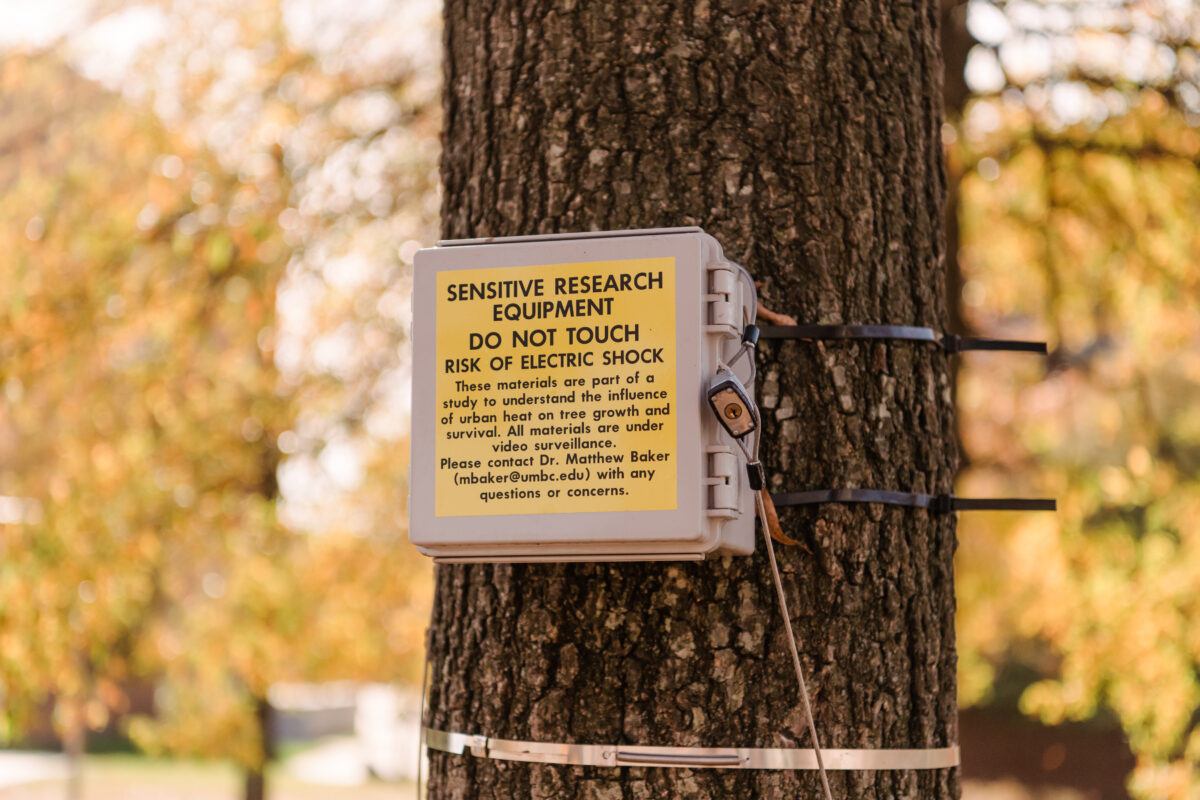 A box containing a sensor on one of the trees in the study. (Marlayna Demond ’11/UMBC)
A box containing a sensor on one of the trees in the study. (Marlayna Demond ’11/UMBC)
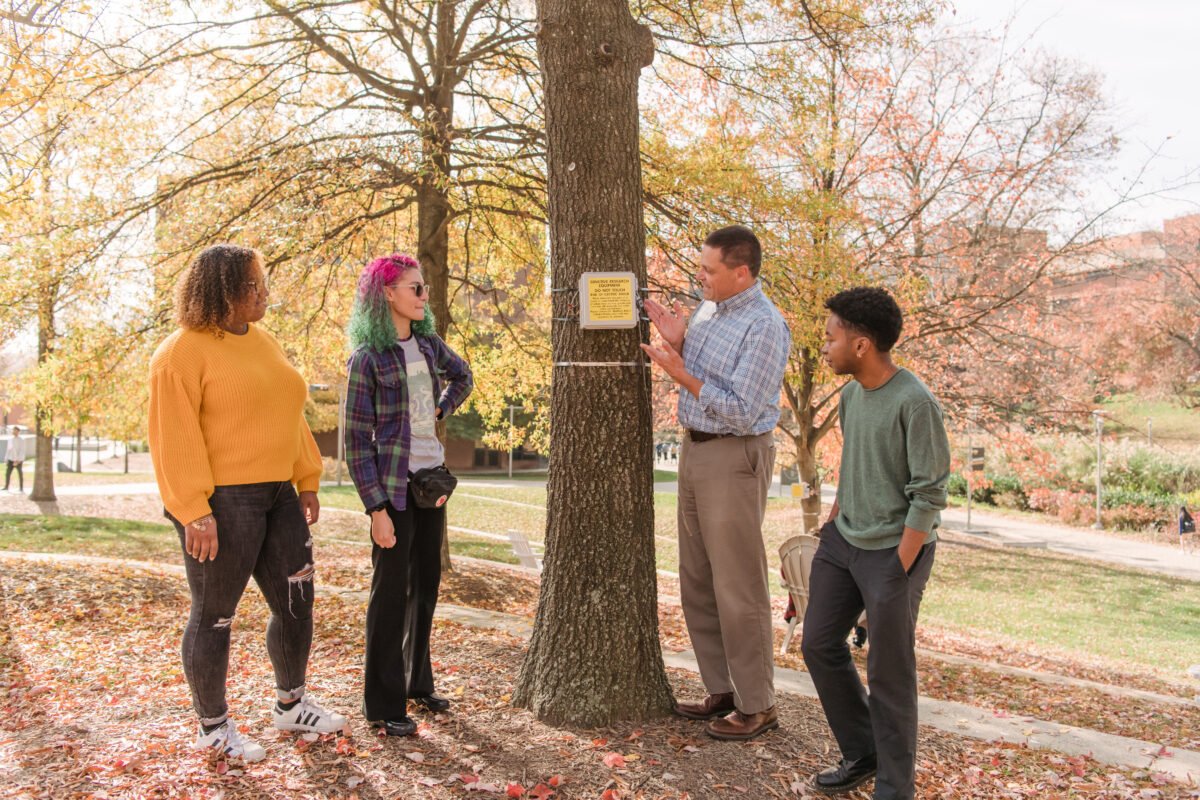 Matthew Baker talks about the research project with UMBC graduate students who have participated in data collection. Left to right: Tyrah Cobb-Davis, Erin Hamner, Matthew Baker, Drew Powell. (Marlayna Demond ’11/UMBC)
Matthew Baker talks about the research project with UMBC graduate students who have participated in data collection. Left to right: Tyrah Cobb-Davis, Erin Hamner, Matthew Baker, Drew Powell. (Marlayna Demond ’11/UMBC)
It’s a bird, it’s a plane, it’s… a research drone?
The team also uses a drone with a thermal camera to measure the heat signature of the tree canopy compared to the surrounding environment. “As long as the canopy is transpiring, the canopy should appear cooler than nearby pavement in our imagery,” Baker says. That temperature difference between the canopy and the surroundings can help determine how much transpiration is happening.
The researchers compare the findings from the drone’s hourly flights with what they’re seeing on the ground. “We’re in the ‘do we trust you’ phase of the relationship” with the drone and its data, Alonzo says. The hope is that if the drone data matches the ground data well enough, the team can use it to gather the same information in a much less labor-intensive way and over larger geographic areas.
Permission to use the drone also required cooperation and trust-building with several UMBC departments, such as UMBC Police, environmental safety and health, and facilities management, as well as BWI Airport. This project is the first time drones have been allowed on campus for research, following a recent revision of federal aviation and campus safety policies.
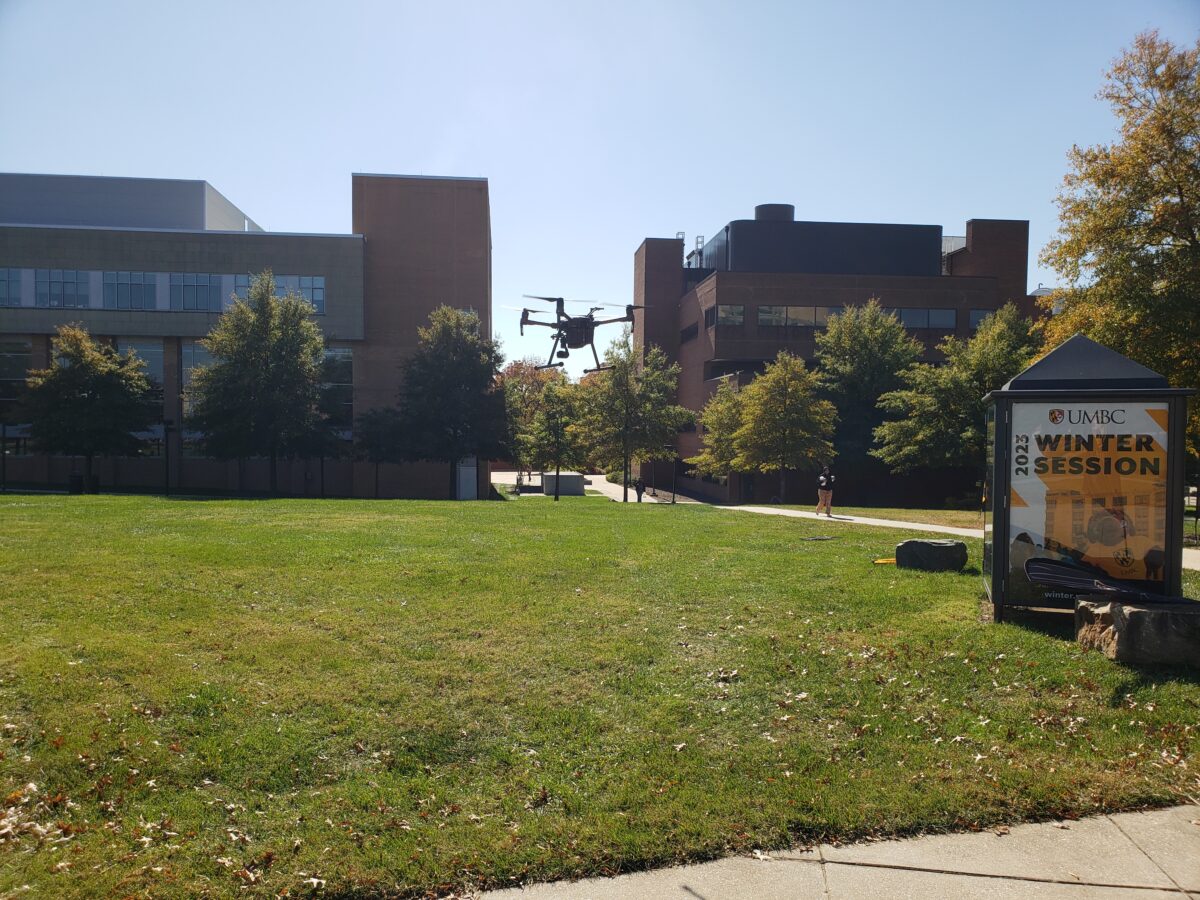 The research drone lands on the grass after its programmed flight. (Sarah Hansen, M.S. ’15/UMBC)
The research drone lands on the grass after its programmed flight. (Sarah Hansen, M.S. ’15/UMBC)
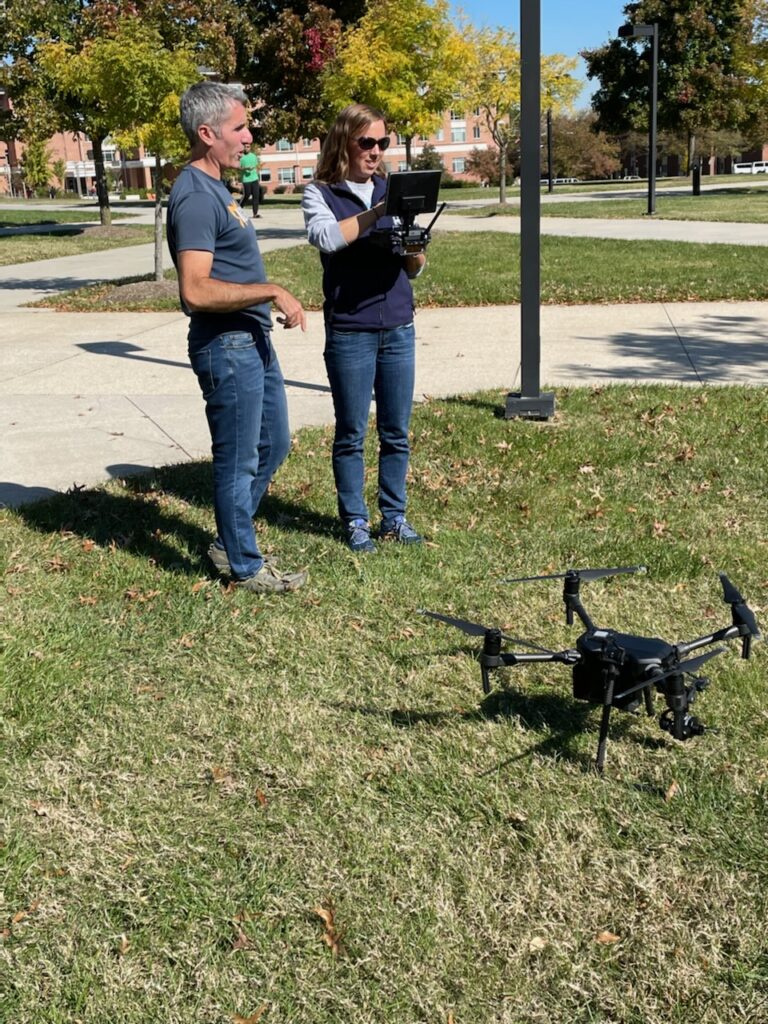 Michael Alonzo (left) and Sarah Hansen send the drone out for its hourly data-collection flight. (Image by Matthew Baker)
Michael Alonzo (left) and Sarah Hansen send the drone out for its hourly data-collection flight. (Image by Matthew Baker)
Growing the fleet
In addition to the thermal camera on the drone, the team is using a hyperspectral camera (on loan from NASA) to collect imagery from the roofs of both the library and the Physics Building. Hyperspectral imagery provides information about canopy stress, water content, and leaf pigments like chlorophyll, which drive photosynthesis. Next year, they hope to have this camera mounted on a drone, too. Together, these two cameras collecting data from above “are the link to being able to perform similar measurements over much broader areas, like metropolitan Baltimore, with airborne or spaceborne platforms,” Baker says.
In fact, the team has already started related work in 11 other cities in the Eastern U.S., including research on how trees help cool cities using data from Washington, DC.
The study on campus is already turning up differences in how various tree species respond to warming. The team discovered that some species intermittently reduce their transpiration rate, possibly as a stress response. Some trees even stop the process altogether during the hottest part of the day—a phenomenon Alonzo calls a “tree siesta.”
It remains to be seen if photosynthesis slows down along with transpiration. If it does, this could indicate that the trees are prioritizing protective measures to prevent overheating and water loss over growth. A reduced growth rate would also reduce the amount of carbon the trees are taking out of the atmosphere, which is an important factor when estimating how much planting trees could benefit the future climate.
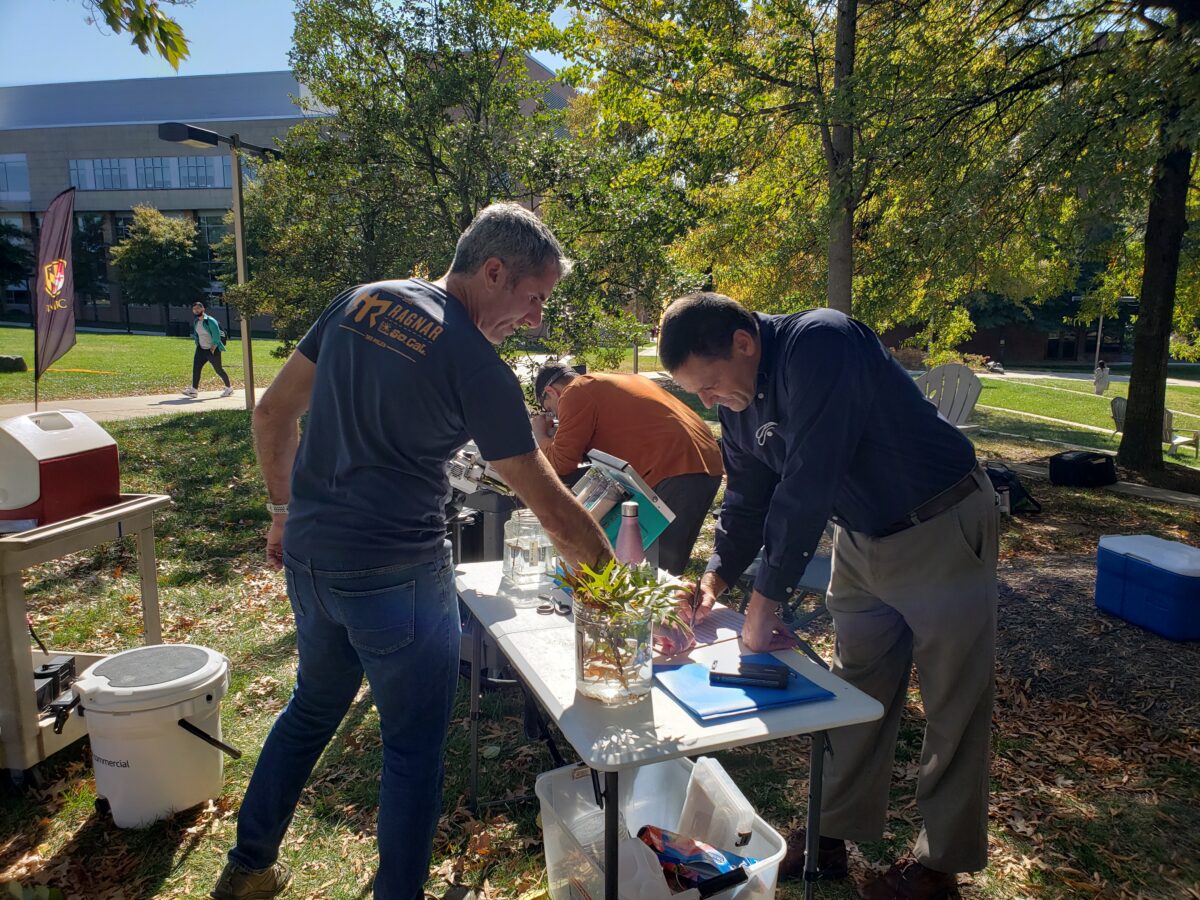 Matthew Baker (right), Michael Alonzo (left), and Josh Caplan (center) collect tree data outside the Albin O. Kuhn Library and Gallery. (Sarah Hansen, M.S. ’15/UMBC)
Matthew Baker (right), Michael Alonzo (left), and Josh Caplan (center) collect tree data outside the Albin O. Kuhn Library and Gallery. (Sarah Hansen, M.S. ’15/UMBC)
Informing the future
All aspects of the project have involved undergraduate and graduate students. More than 15 students have contributed, including Caitlin Beckjord ’23, geography and environmental systems, who first got involved in forest research through a summer project while she was a student at Howard Community College. Micah Polsky ’25, geography and environmental systems, has a leading role in a complementary study with the USDA Forest Service. They take precise weekly measurements of the trees’ girth—another way to measure their water status as well as their growth rate.
Faculty teach each student how to use the full range of instruments used in this study, making this project an excellent training opportunity for students in majors from environmental science to physics or information systems. The project brings together important new details about how trees are responding to stress, testing and verification of new technologies, and student engagement and training in a way that is likely to have a significant impact on the participants and the future of this research field.





